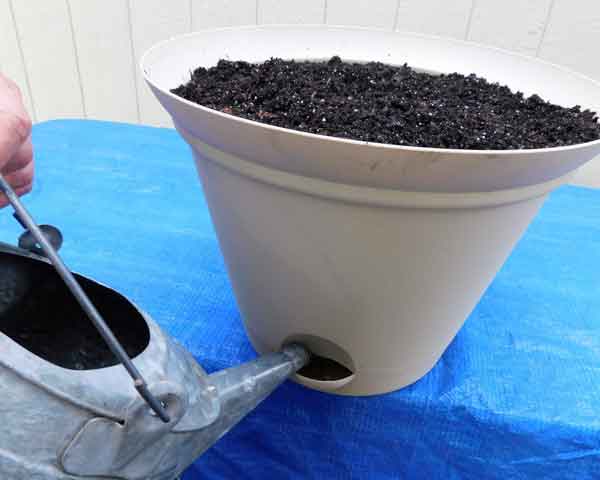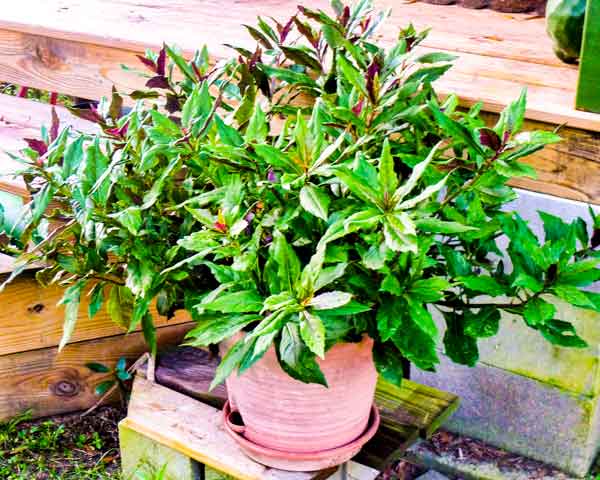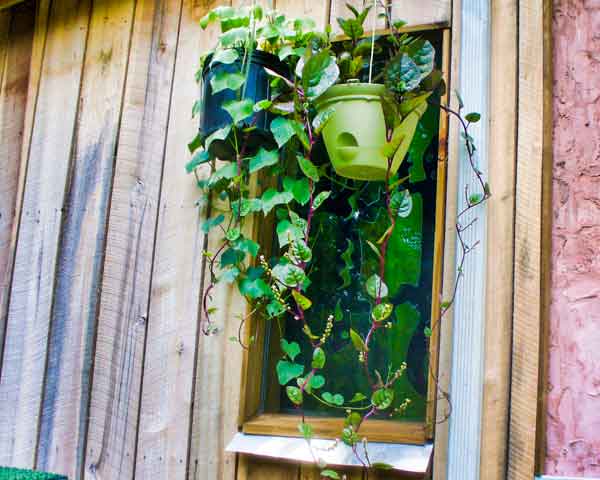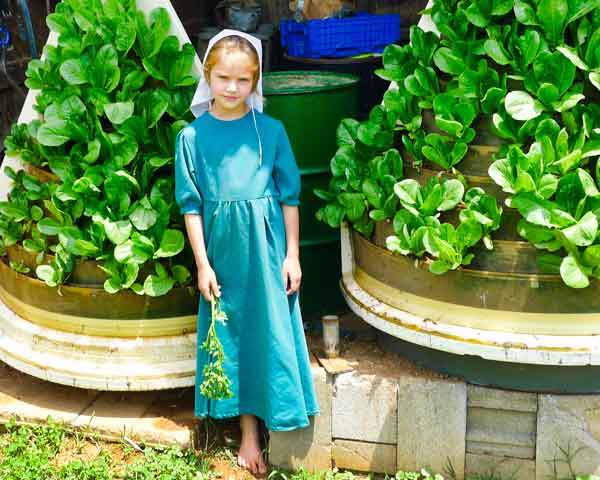Growing Greens in Containers
As the world’s population becomes more urban, more and more people are living where they don't have enough room for a traditional vegetable garden. Sometimes the biggest obstacle is a complete lack of soil . . . or what soil there is is of poor quality, or contaminated, or infested with nematodes. And in many places, the weather is hostile to vegetable gardening for part of the year. In these cases, container gardening can save the day.
Growing vegetables in containers can make good use of very small spaces, even rooftops. Custom-made soil substitutes can solve the problem of contaminated or infested soil. And relatively small containers can be moved indoors for periods of bad weather. These advantages of growing in containers can enable millions of people to produce some of their own food.
Basic steps to growing abundant high-nutrition food in containers
- Select the appropriate containers and make sure they have adequate drainage
- Buy or make suitable growing medium
- Choose high nutrition plants that will thrive in containers
- Keep the containers evenly watered and supplied with plant nutrients
There's really no limit to what you can use for gardening containers. Some of the things that we've used successfully include recycled nursery pots of various sizes, plastic barrels cut in half, terra cotta pots, 5- and 2-gallon buckets, and the trays that are sold for mixing mortar or concrete. We've even used kiddie pools . . . and toilets that are no longer functional. In Africa discarded feed sacks are commonly used as containers for growing greens.
Whatever container you use, you'll need to make sure there is adequate drainage so that plant roots don’t become waterlogged. We usually drill a bunch of holes in the bottom of the container and then put in a layer of insect screen to keep the growing medium from falling out through the holes.
Soil from the yard or garden rarely works well in containers. You want a growing medium that is lighter and can hold more water. There are many brands of potting soil for sale at hardware and garden supply stores. They are usually based on some combination of composted pine bark, peat moss, or coconut fiber (called coir). Often coarse vermiculite and perlite—two heat expanded minerals—are added to improve both aeration and water retention. If you're going to use a lot of potting soil it's usually cheaper to make your own from the bulk ingredients.
Low income gardeners generally need to make their own growing medium. Though the results are not likely to be as good as with commercial potting soil, there are many recipes for making potting soil from cheap or free materials. One of the best and easiest is to mix equal parts of each of the following ingredients. (We use a 5-gallon bucket to measure, and a wheelbarrow to mix in.) You should sift these ingredients through a quarter-inch mesh or hardware cloth before measuring and mixing.
Ingredients for low-cost potting soil
- Compost or leaf mold (the loose stuff found at the base of pine and other trees)
- Sand
- Garden soil
- Optional: If it is available, adding up to 25% sifted biochar will dramatically improve your growing medium.
After the ingredients are well mixed, add enough water so that the new growing medium is roughly as moist as a wrung out sponge.
Regardless of how good your initial growing medium is, you’ll need to add some plant nutrients occasionally. We usually try to maintain the fertility of our containers by adding a thin layer of compost twice a year. If growth is poor, we may use diluted fish emulsion fertilizer or seaweed extract for a faster response than the compost provides. Even with added compost, it generally pays to empty the containers and start anew every two or three years.
Watering & Drainage
It can be tricky to ensure that your container plants have enough, but not too much water. So-called “self-watering” containers have a reservoir for water at the bottom that addresses this problem. As the growing medium dries out, it wicks up moisture from the bottom. . . . This self-watering container was purchased at a garden supply store. . . . Here is a healthy Okinawan spinach plant growing in a similar container . . . and lettuce and parsley thriving in larger, more expensive self-watering containers. If you enjoy tinkering you can find several different plans for making your own self-watering containers on the Internet.


These two planting trays with young radishes and collards show the importance of good drainage. The second tray doesn’t have enough drain holes, and the plants have become waterlogged; there's algae growing on the soil surface.
Matching the Plants to the Containers
Once you have your containers collected, and have made the drainage holes, and your growing medium is ready, you get to choose which plants to grow in which containers. We focus on leafy vegetable plants. These are, of course, Leaf for Life’s specialty, but leaf crops are especially well adapted to container growing. Because they produce more food and more key nutrients per area than any other crops, leafy vegetables make optimal use of the limited growing spaces of containers.
Smaller containers can be moved to take advantage of patterns of sunlight and changing weather. They are obviously better suited to smaller plants. (Make sure your container is big enough for your plant. The growth of the plant more or less stops when the roots reach the container wall and bottom. That's when it's time to "pot up," or transplant to a larger container.)
Bigger containers like 30-gallon nursery pots, tires, and half barrels are hard to move without a hand truck or a friend. You should pick the sites for large containers carefully before filling them. Consider sunlight and accessing for tending and harvesting.
The biggest containers we grow food in are kiddie pools that are often sold at bargain prices after the summer swimming season.
The smallest containers we use are standard 10-by-20-inch seed trays. We use them to grow microgreens of barley, wheat, peas, radishes, arugula, and other leafy vegetables. They are usually ready to harvest in 2 weeks or less, and can provide a steady supply of fresh greens . . . even for renters and people with no space for a garden.
One of the simplest, cheapest, and most effective container growing systems we’ve encountered is the use of feed sacks to grow kale and vine spinach in Kenya. Some of these have tubes down the middle to make watering easier. . . . A sophisticated variation are these sack keyhole gardens that maximize growing area and minimize walkways. Even in these very small areas the sack gardens can provide a family with plenty of essential vitamins A, C and folate, as well as significant amounts of many key minerals and beneficial antioxidants.
Older people and folks with disabilities often have trouble gardening because bending to the ground to work with plants is difficult. Setting containers on tables or other raised surfaces makes their gardening experience more practical and more enjoyable.


Growing greens in containers certainly won’t solve all of your gardening problems. In fact, it will introduce some new ones. But it can offer some surprising possibilities, like these hanging vine spinach and sweet potato greens shading a south facing window. For city dwellers and renters, using containers may be the only way to garden, but growing in containers can be a creative addition to any garden.
Thanks for watching.
View this video on YouTube (and subscribe to our channel at Leaf for Life @ YouTube)